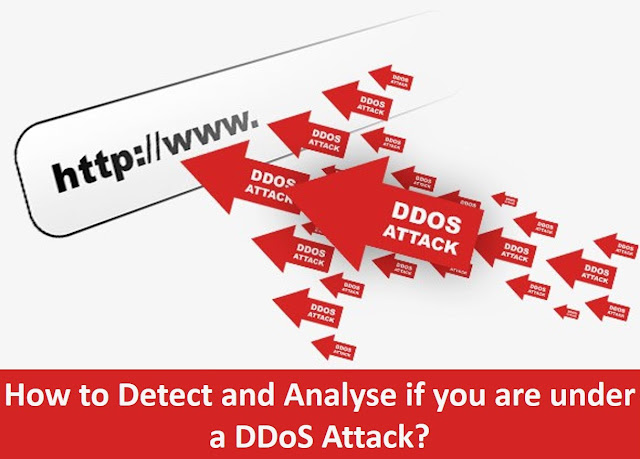Cyberattacks have always surprised security experts because they are sneaky and come in different forms. Distributed Denial of Service is a process of driving a huge amount of traffic or load to a targeted device or a website using multiple different machines to either slow down the device and the site or crash a website for the targeted duration of time.
DDoS attacks usually make use of any device that’s connected to the internet to multiply the impact of the attack. Hackers use these devices as bots to increase the efficiency of their attacks.
Mirai Botnet is one good example of DDoS attacks that have been causing chaos for organizations for a long time. By having security solutions in a place like Apptrana, you can detect the risks and protect the applications from Cyberattack.
In this article, let’s see how we can identify if you’re under a DDoS attack.
Three simple checklists can help organizations and individuals identify a DDoS attack and to prevent DDoS attack.
- Monitoring and analyzing website traffic
- Scrutinizing website latency
- Pro-longed delays
Monitoring and Analyzing Website Traffic
Security professionals can check for the website traffic logs, for any unusual traffic inflow for anonymous reasons. They can also monitor the impact period and how often the same is being repeated in a given period.
Is this because of any marketing campaigns or so, then its legitimate traffic however in most cases it ain’t? So looking into the website load and CPU usage of the web servers could help narrow down your suspicion.
Scrutinizing website latency
Organizations can also check for the website latency, the speed at which the end-user browsers and the web servers are responding, if there is a continued delay in website loading and navigation for any unknown reasons, then your website could be under a DDoS attack.
Pro-longed delays
Any suspicious behavior with unknown traffics can be a potential DDoS attack on your device, server, or ISP. Checking the traffic loads and increased amount of CPU usage (should be close to 100%) could be an alert for your security protocols to be redefined and mitigate the threat.
How to secure your network against DDoS attacks?
Organizations need to prepare themselves with the right security tools, cyber awareness, and good cyber hygiene to secure their network against any potential cyber threats.
Moreover, this is why compliance and cyber frameworks are in place to be implemented in the network to prevent threats in the first place.
Organizations should make sure they follow the below five points to keep themselves secured against DDoS attacks,
- Robust firewall configurations
- Employing a web security provider
- Honeypot infrastructure
- Using VPN’s from public networks
- Dedicated network security professional
Robust Firewall Configurations
Organizations need to ensure they have got their firewalls enabled for the incoming traffics and monitor the same continuously. Defining solid firewall configurations to control what comes into your corporate network will help organizations. Employing firewall management tools with this overall network control your piece of cake.
Employing a web Security Provider
Organizations can also employ a web security provider service from a third party to ensure everything stays intact. Web Security Provider should come with a lot of options, like application firewalls, web application firewalls and more.
Also, confirm the security providers offer assistance apart from the automated controls, not attacks can be fixed using an automated firewall mechanism which would require manual efforts from a security analyst.
Honeypot Infrastructure
Servers can be protected from an external threat if the organizations have employed a honeypot to act as a decoy whenever traffic flows from an external IP or anonymous traffics are found to be inbound.
DDoS attacks often assume the honeypots as the target and in the process of the attack, they alert the security professionals for anonymous traffic inflow.
Using VPN’s from Public Networks
Another trick to evade DDoS attacks is by practicing VPNs. Virtual Private Networks will offer complete privacy and also prevent your device from being exposed on an open network for DDoS takedowns. If a hacker can own your device, and convert to a bot then things can come down the slide for your organization.
With proper VPN security, your device’s communication between the browser and the server stays secured. Dedicated network security professionals
Organizations must recruit and allot dedicated professionals to take care of the network security which can be done with guidance from network security and firewall analyzer tools that help organizations ease the overall DDoS prevention strategies. Even deception technologies can be employed if the organizations are prone to DDoS attacks.
If all the above mentioned precautions are made organizations would be able to prevent DDoS attacks, however to mitigate, detect or fix a happening attack security professionals should first identify a DDoS attack that’s happening using a web server log management and alert system, and then update the firewall configurations to prevent the incoming traffic from the detected IPs, or in the worst case take their network temporarily as a demilitarized zone to prevent any connection to internet.
However, that should affect the reputation a lot, so it is better to go proactive. Employing a failover server, secure gateway server could be handy at certain times.
Please share your thoughts about this article, and let us know if you’ve experienced any DDoS attacks in real-time and how did you mitigate the same at the right time.






0 Comments